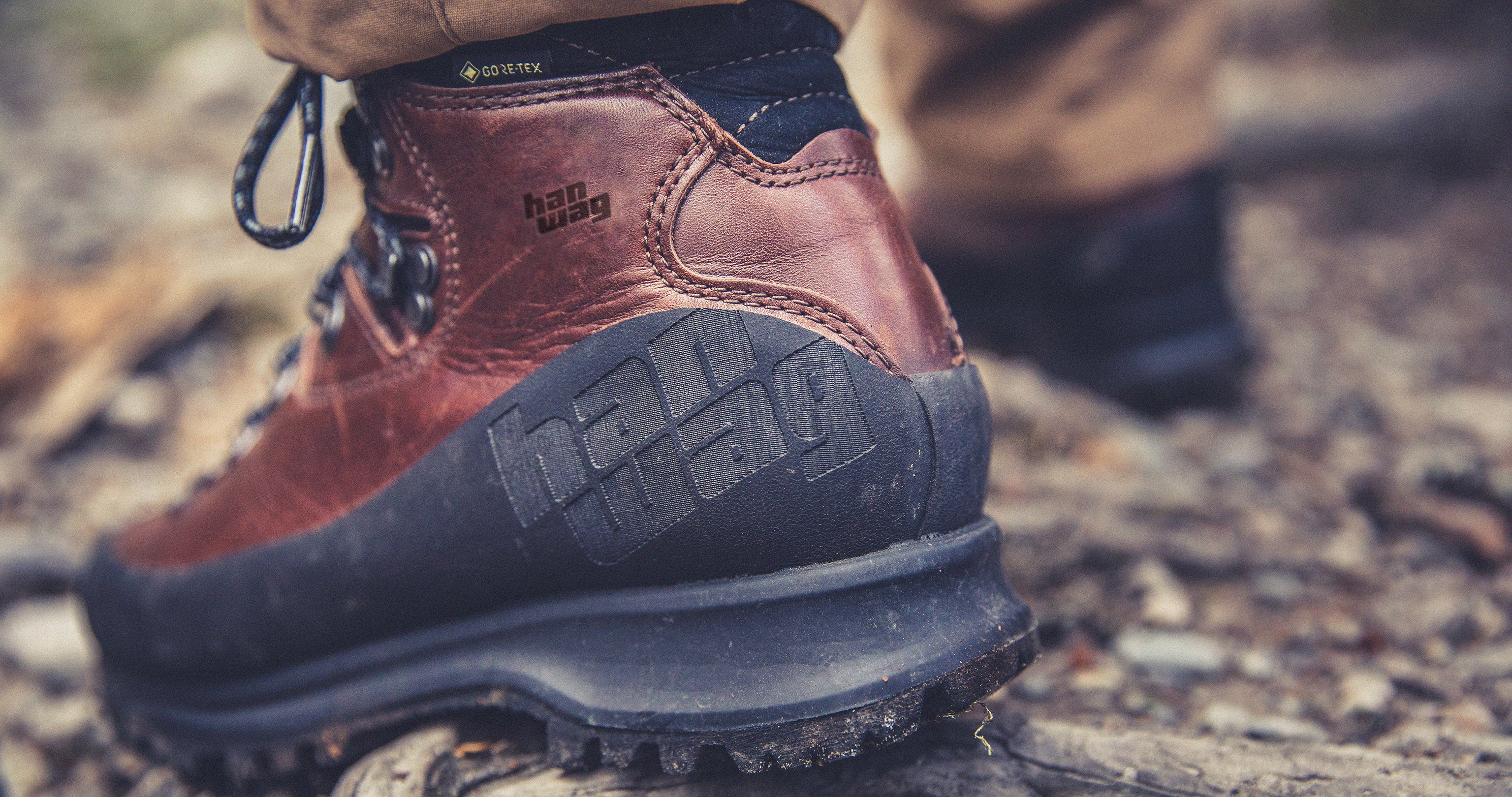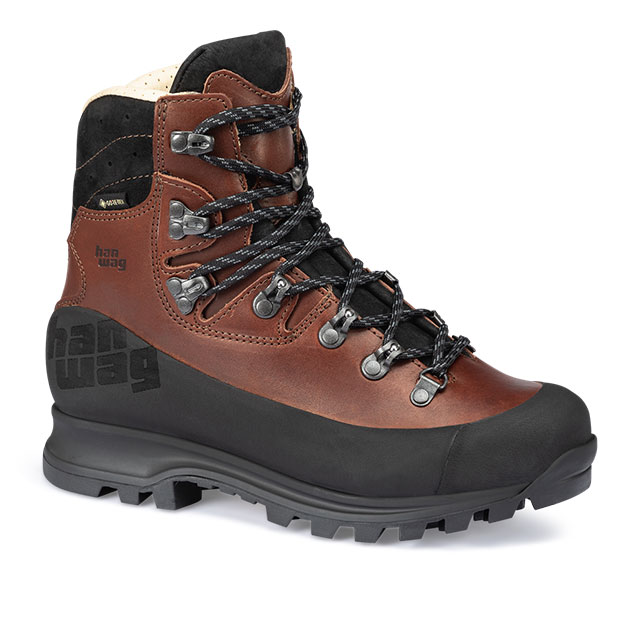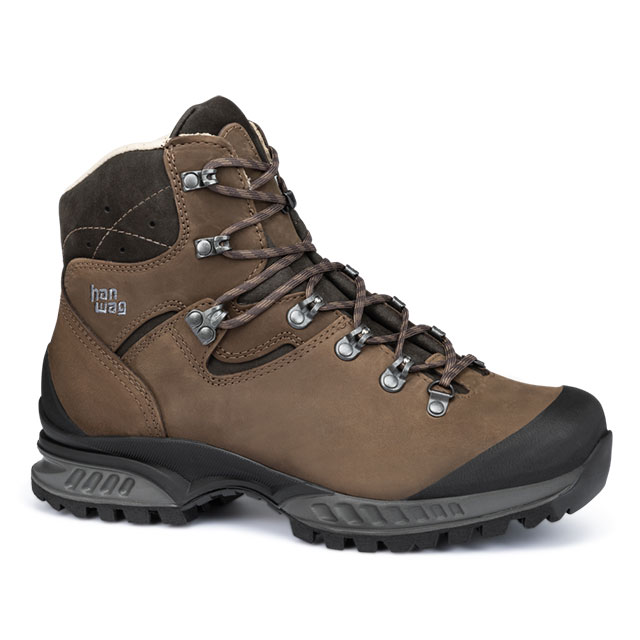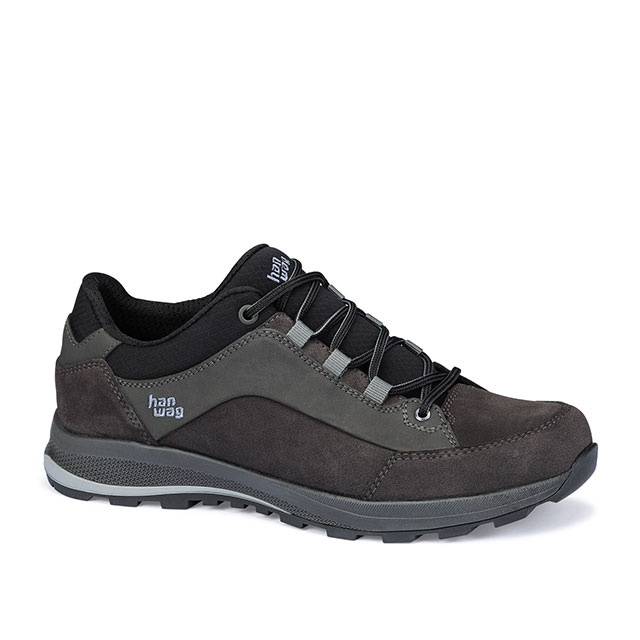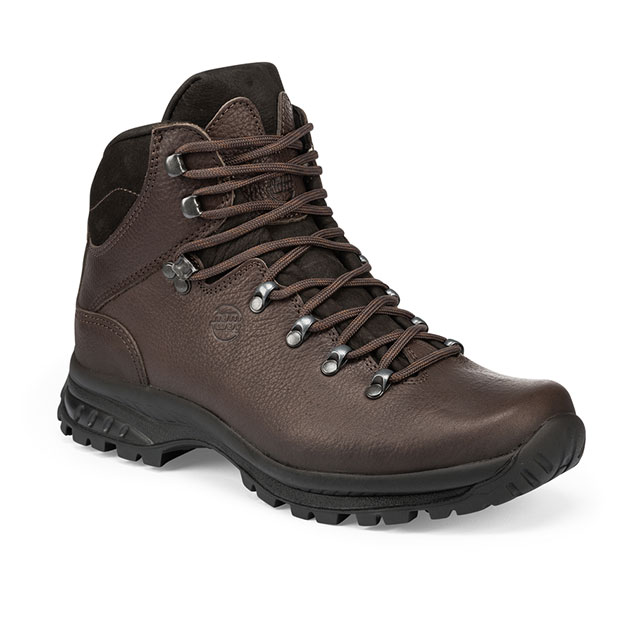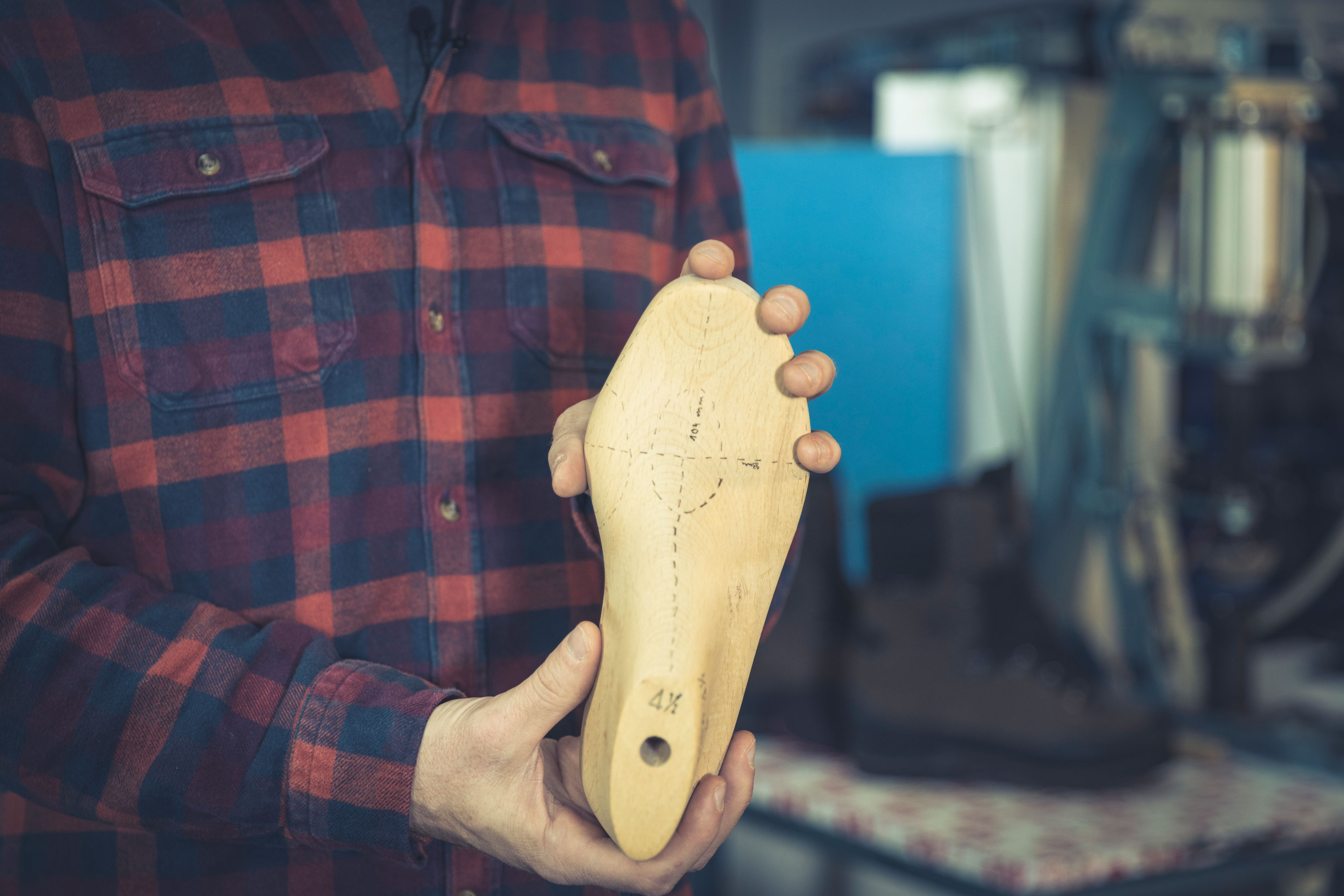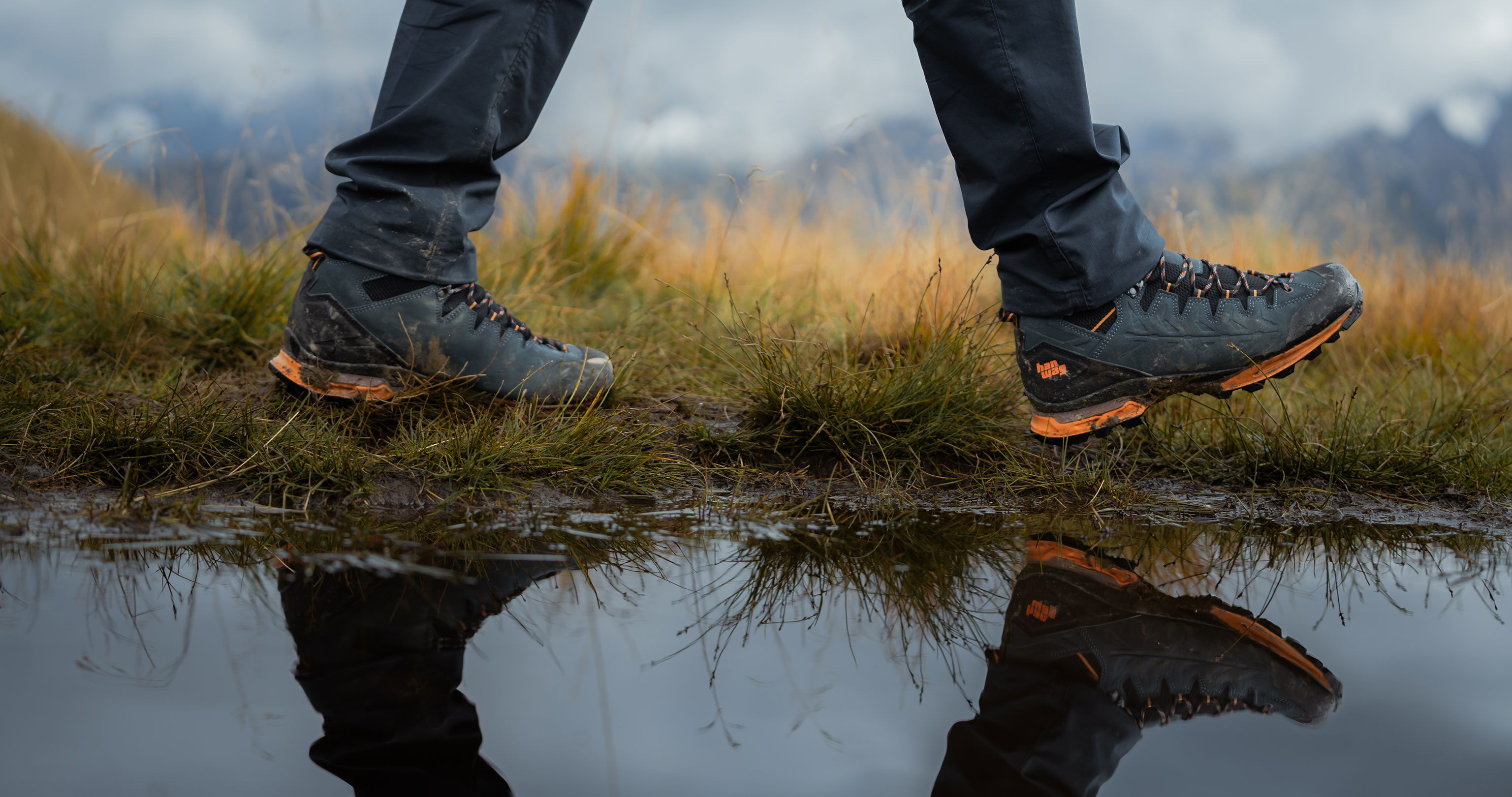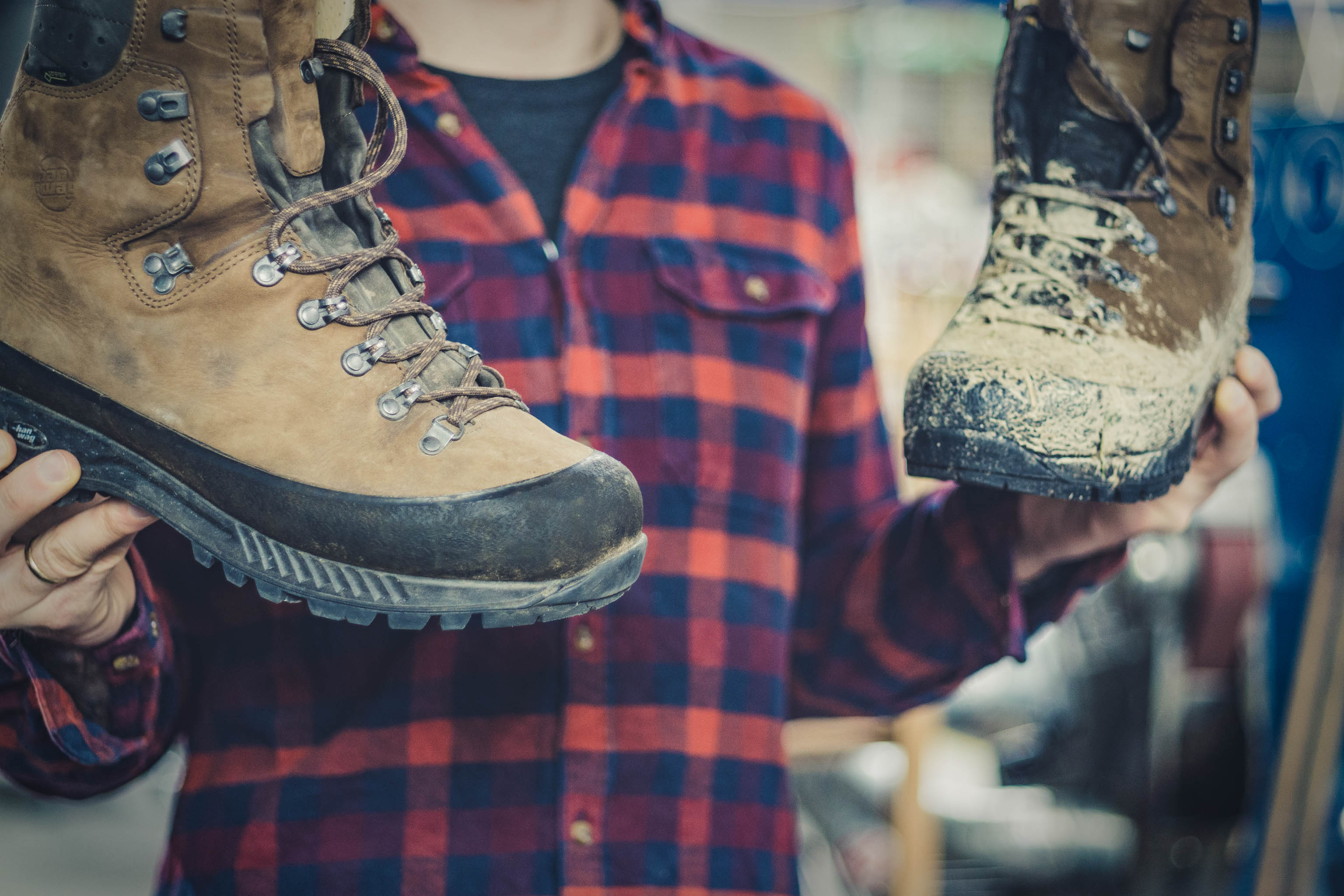Updated on
- Leather is sturdy and hard wearing
- Leather lasts a long time
- Leather offers the best fit
- Leather makes boots superbly comfortable to wear
- Leather is sustainable
Leather is the traditional material for hiking boots or mountain boots. For generations, fans of the great outdoors have roamed through forests or climbed mountains in leather boots. Even today, lots of people swear by footwear made of natural leather when they set off on expeditions.
However, nowadays, there’s a much wider choice available. On the one hand, trekking boots or mountain boots made of 100% leather are still around. On the other hand, the upper is increasingly a combination of leather and a synthetic fabric. This mix is primarily encountered in more lightweight outdoor boots for moderate hikes. Footwear manufacturers tend to pick the material for the upper to match how the footwear is intended to be used. (–> Further reading: How leather is made)
You can often choose between fabric and leather linings.
On the other hand, customers can also often select what the lining is made of. Because HANWAG and other manufacturers offer some footwear models with both leather and a fabric lining. The latter is usually combined with a waterproof membrane like Gore-Tex or EcoShell. Our footwear with leather linings has an LL for leather lining in the name, those with Gore-Tex a GTX and EcoShell with an ES.
And what’s the right material for your hiking boots or mountain boots?
As an outdoor footwear manufacturer with over 100 years of experience, we like leather very much. Which is why this article will outline the five strongest arguments in favour of this natural product. We hope this will make it easier for you to pick the right material.
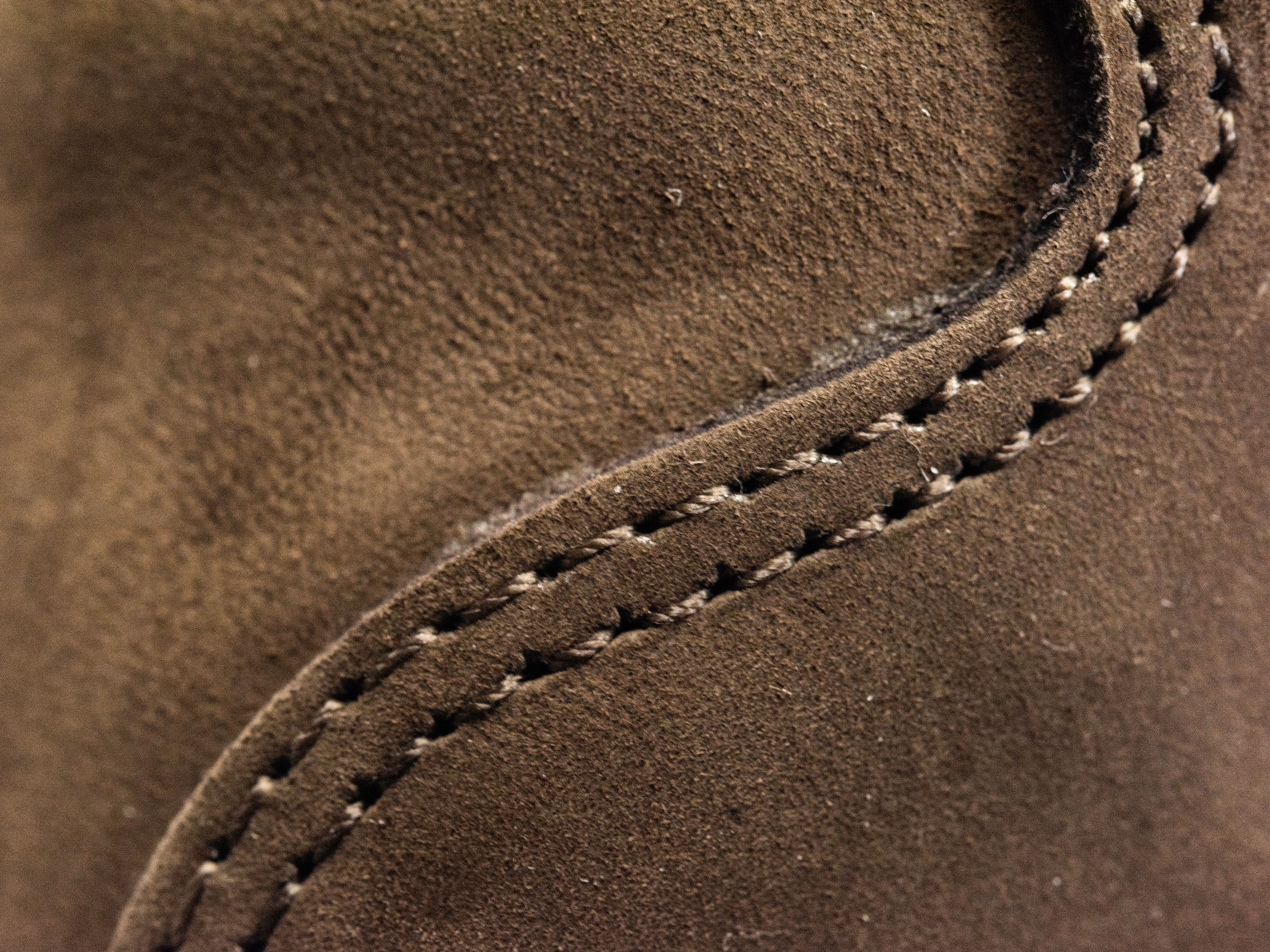
1 Leather is sturdy and hard wearing
The more challenging the terrain, the greater the stability a boot needs to give the foot. It then stops us from twisting our ankle or incurring other injuries. A sturdy boot also gives exceptionally good support and the confidence to manage very challenging routes.
Which is why thicker (up to 3 mm) leather on the stiffer side is applied for the uppers on very sturdy leather trekking boots and leather mountain boots. A synthetic fabric of the type used in a lightweight hiking boot or even sneakers would be far too soft in this case.
At the same time, the leather makes the boots very hard wearing. Thicker leather can withstand rocks, sand or moisture. However, it’s important to look after your footwear. (–> Caring for hiking boots made easy)
In other words, if you’re seeking an outstandingly sturdy and tough boot, leather is the number one choice.
2 Leather lasts a long time
In contrast to lots of other materials, leather shows few signs of wear and tear, doesn’t wear through or lose its shape. This makes it a highly durable material. The only thing that seriously damages leather is when it becomes brittle. Small cracks mean it loses its stability and can no longer repel water so easily. However, it’s simple to prevent this drop in quality by drying the footwear properly and polishing the leather regularly.
Doesn’t leather footwear ever wear out? Just like all footwear, the rubber outsole on leather footwear can of course wear out. Which is why the majority of HANWAG models can be resoled. (–> Everything you need to know about resoling)
In other words, if you want to enjoy your outdoor boots for years and years, it’s worth investing in leather.
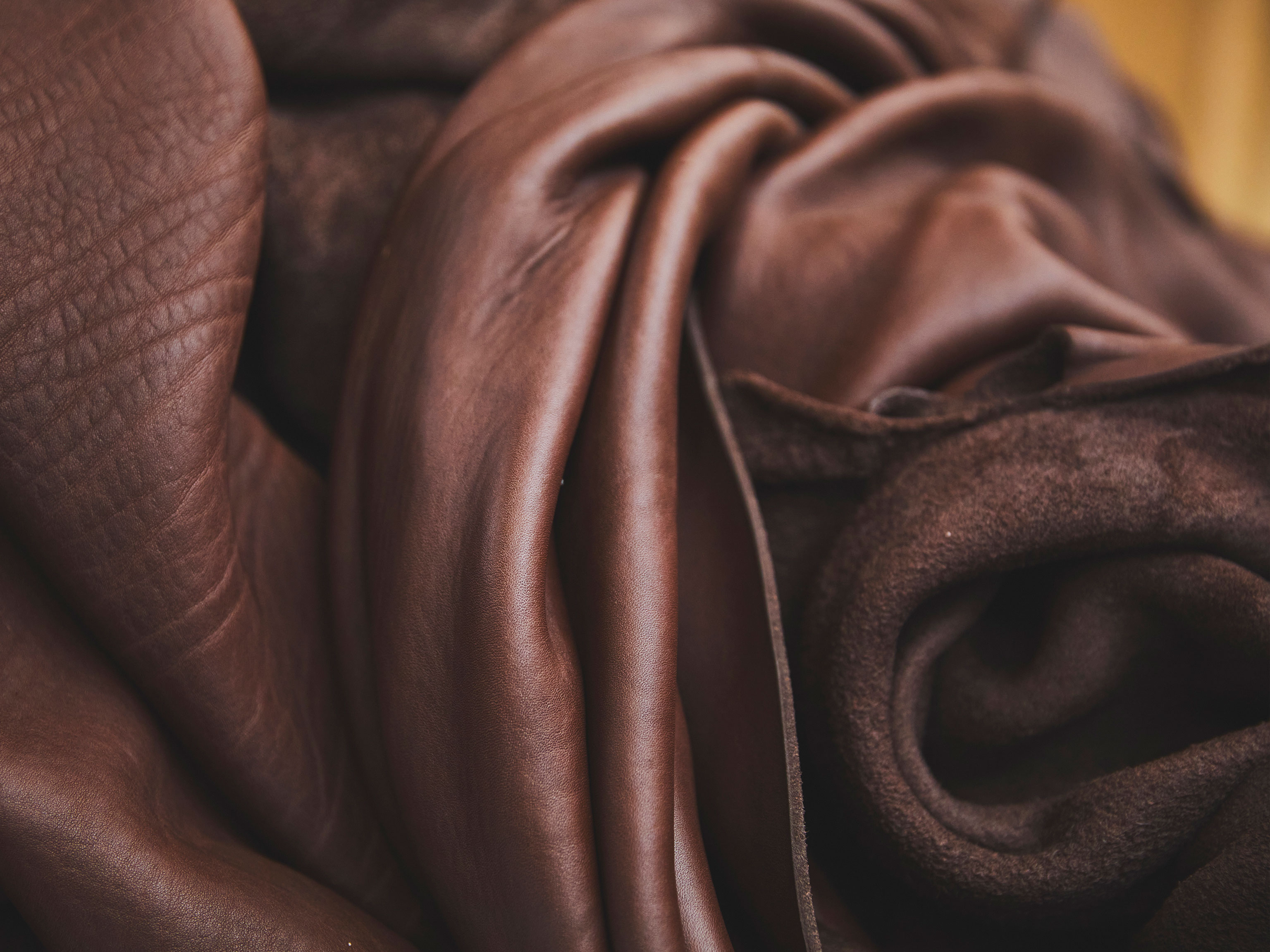
Always stay up to date: Subscribe to the HANWAG newsletter and become part of our community.
3 Leather offers the best fit
The lasts are responsible for a boot’s fit. The last is the name for the plastic model of a foot, around which the boot is fashioned. They come in different sizes and for different shapes of foot. So the lasts turn a boot’s upper into the required shape. And in contrast to soft synthetic fabrics, leather keeps its shape, whatever the number of expeditions or age of the footwear. (–> 4 tips for a perfect fit)
A leather lining adapts superbly to the foot.
When used as a lining, leather has just as big an impact on the perfect fit. In this case, a thinner and softer leather to the upper is used. It adapts to the shape of the foot even better than a fabric lining and also keeps its shape. Which is why it’s worth really wearing in boots with a leather lining. Wearing the boots in gives the fit its finishing touches and makes them feel like a second skin. (–> Tips for breaking hiking boots in)
Some people will now argue that “Only a textile lining with a membrane makes hiking boots waterproof.”
And this is where it’s important to take everything into consideration. A well-looked-after and impregnated leather boot is sufficiently waterproof in the majority of cases. Which applies if you’re out and about in dry regions like southern Europe. Or if you’re just hiking during the day and can dry your boots again afterwards. On the other hand, we recommend a fabric lining with a membrane for expeditions lasting several days in wetter regions like Scandinavia.
Therefore, to some extent, the lining you choose depends on where you’re wearing the boot. However, in terms of fit, a hiking boot with a leather lining is the top choice.
10 dos and don’ts for leather
-
Do: Wear leather footwear in
The leather will then adapt to the shape of your foot.
-
Don't: Lend leather footwear to other people
Other people’s feet can ruin your fit.
-
Do: Clean, dry and care for dirty footwear as soon as possible
-
Don't: Put hiking boots covered in mud in a cellar
This will damage the leather.
-
Do: Dry wet leather footwear straight away
… in a well-aired place at moderate temperatures.
-
Don't: Dry wet leather footwear in very hot temperatures
… like in front of an oven or in full sun. This will make the leather brittle.
-
Do: Polish the leather from time to time
Shoe wax is ideal.
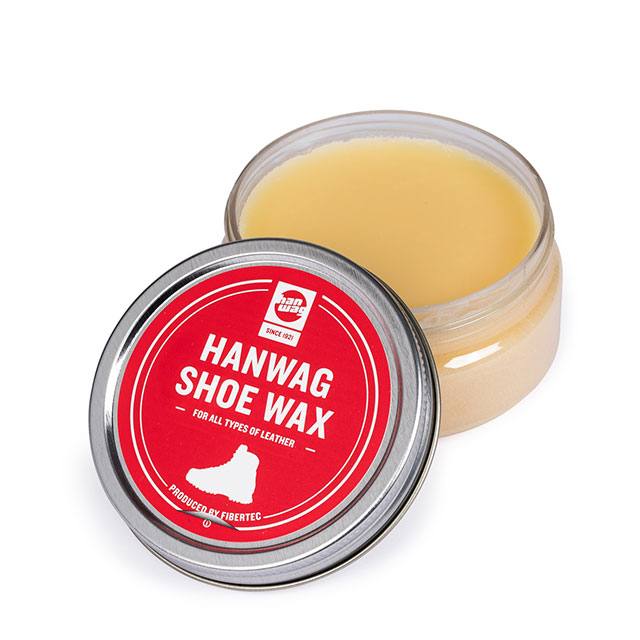
-
Don't: Use oil or grease to care for hiking boots
These will harm the boots’ breathability.
-
Do: Care for a leather lining by applying some hand cream regularly
This will keep it supple.
-
Don't: Wander around with grit, stones or pine needles in your boots
They can damage the lining.
4 Leather makes boots superbly comfortable to wear
In addition to the fit, the airflow and breathability of a boot also have an impact on comfort. Our feet sweat during hikes, causing moisture to build up in the boot. Moisture and hot feet don’t just feel unpleasant. They’re also the reason why painful blisters form. (–> Preventing and treating blisters)
Therefore, it’s vital to wick away moisture as thoroughly and quickly as possible from the inside of the boot. And this is where a leather lining is superior to a waterproof membrane. Because leather is even more breathable.
Above all, if you tend to sweat a lot, you’ll like the way your foot feels in a hiking boot with a leather lining. And it prevents blisters.
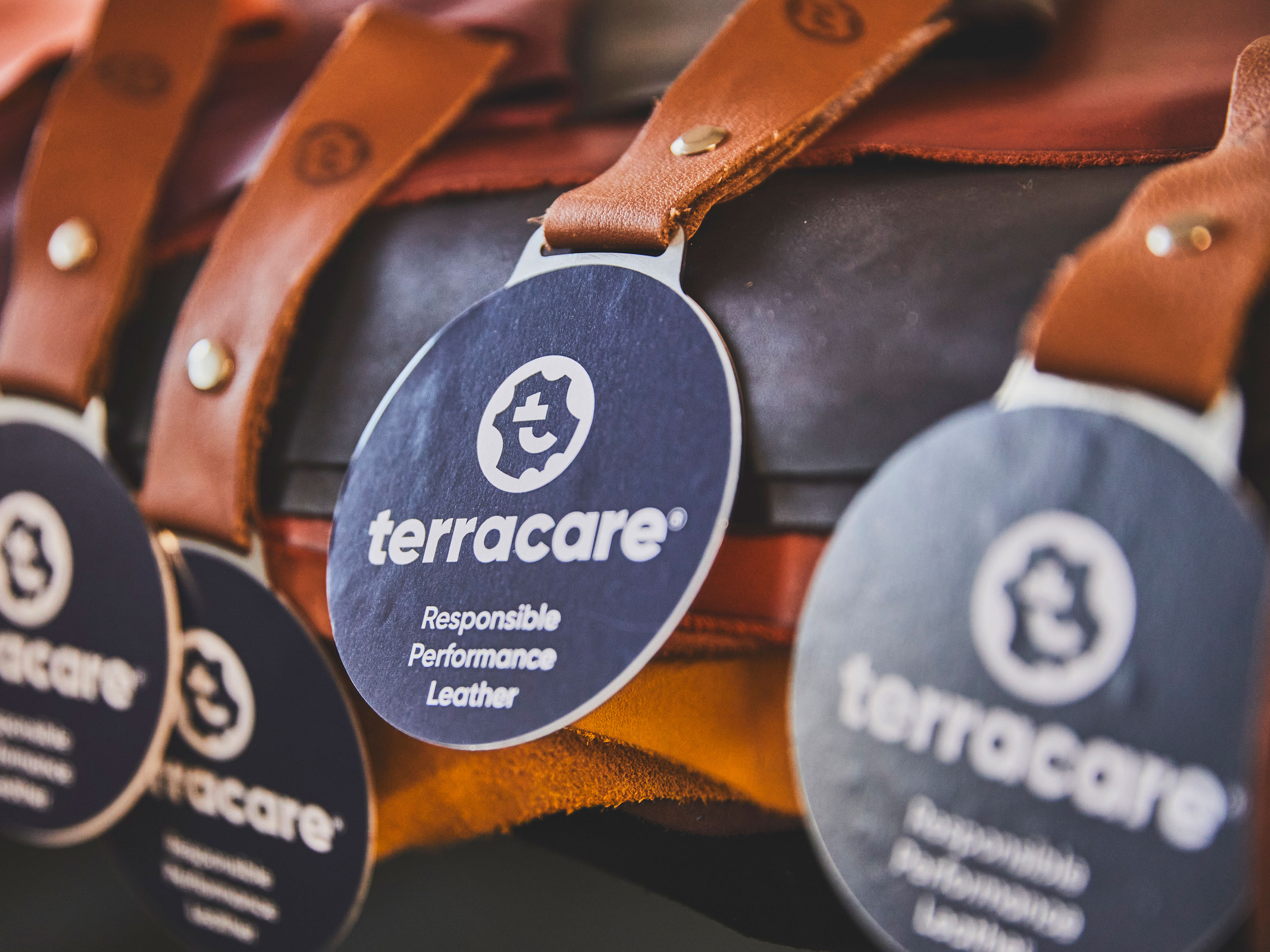
5 Leather is sustainable
Shoe leather is a by-product of the meat industry. In fact, more cattle hides are produced worldwide than the leather industry can use. Therefore, no farm animal is slaughtered for its hide. Instead, the tanneries upcycle the animal skins they already have and turn them into high-quality leather.
At HANWAG, we purchase our leather from European tanneries. (–> Our partnership with the Heinen tannery) In addition to quality, they take environmental friendliness very seriously. Consequently, any chemicals required for tanning comply with very stringent European directives. We also use chrome-free tanned leather for the linings in some models. Some boots, such as the HANWAG Waxenstein Bio model, are only made from this very sustainable material.
Its exceptional durability is a factor in leather’s sustainability. When cared for well, leather footwear will last years and years. As a result, it saves on resources and emissions incurred during leather and footwear production and when the products are shipped and sold. (–> A guide to sustainable hiking boots)
Upcycling a natural product and its long lifecycle are strong arguments for the sustainability of leather footwear.
Watch the video: A visit to the Heinen leather factory (English subtitles available)
So, in conclusion, there are lots of good reasons to choose leather.
As you can see, leather has lots of good qualities. Leather uppers are the go-to option, particularly for sturdy hiking boots and mountain boots. Footwear made of a high proportion of fabric is ahead in terms of weight and often price too. However, leather can often compensate for these factors because it lasts so long. And its fit is even better, especially in combination with a leather lining.

